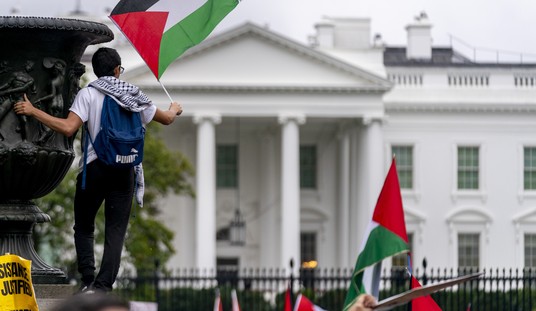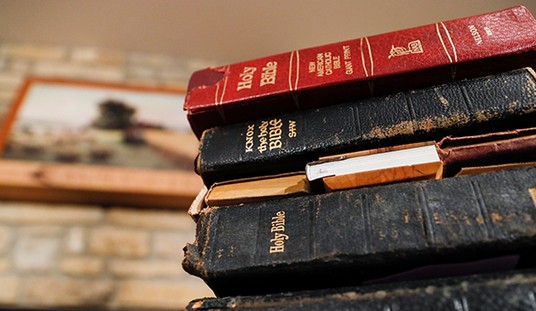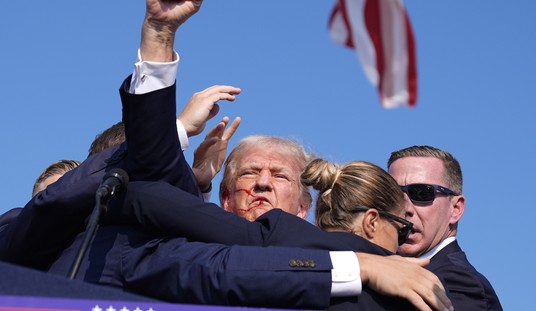Events in Syria are moving rapidly forward. The first moves of the battle for the capital, Damascus, have begun. Rebel units are targeting the regime’s military facilities in the city’s environs.
The Free Syrian Army, according to regional news reports, is already claiming to be in control of most of the air defense facilities in Damascus Governate. An FSA spokesman told the Sharq al Awsat newspaper on Thursday that the latest base to be besieged by the rebels is the Aqraba helicopter facility, situated between Damascus International Airport and Damascus city itself.
Once Aqraba falls, the spokesman said, the next target will be the Saida Zeinab military airport, used by the dictator’s helicopter gunships.
Fighting is also taking place in the eastern suburbs of the city. The regime is shelling pro-insurgent Sunni neighborhoods on the edge of Damascus. The suburbs of Jaramana, Saqba, Irbeen, and Zamalka are receiving the attention of Assad’s artillery, according to the respected Syrian Human Rights Observatory.
The rapid decline in the regime’s fortunes derives from a shortage of loyal manpower available which has been notable for some months. This, combined with the growing sophistication of the rebels’ weaponry, has led to the very serious setbacks which it suffered in November, and which have now brought the rebels to the gates of Damascus.
But there is still a long way to go.
The Syrian regime has by now surely abandoned any hope that it can re-conquer the large swathes of the country held by the rebels. There are no signs, however, that it is preparing to concede the fight. It is also not accurate to say that its forces are in a state of complete disarray or headlong flight, or that it is without options.
The core units that the regime requires to continue the fight remain intact. The overwhelmingly Alawi 4th Armored Division and the Republican Guard, both commanded by the president’s brother Maher Assad, are operative, as are the Special Forces. The regime, of course, still has the advantage in the air, and retains its heavy artillery capability. The insurgency has yet to complete the successful conquest of any of the main urban centers of Syria.
The 4th Armored Division is currently engaged in the battle to prevent the rebels from penetrating the capital beyond the eastern suburbs, which the insurgents already control. Assad’s army understands that it must, at all costs, and maintain this security perimeter around the east of the city.
The regime troops must also keep the road to the airport open, in order to maintain Assad’s links to the outside world.
With much of the north and east of Syria now in the hands of the insurgency, Assad has strengthened his defenses in the largely Alawi western coastal region. His troops are maintaining a defensive line at the eastern edge of this region, along the Orontes River Valley, west of the largely Sunni cities of Homs and Hama. This line must be maintained, in order to keep open the link between Damascus and the emergent Alawi enclave in the west.
If the capital falls, Bashar Assad will effectively lose any claim to be the ruler of Syria. Instead, he (or perhaps another senior Alawi figure) will become the leader of a particularly well-armed sectarian militia.
This militia will then seek to defend its heartland in the west. The Sunni rebels, meanwhile, will seek to reconquer and destroy the Alawi enclave. They will be faced with a similar task in the Kurdish north east of the country.
So the Assad regime’s support base is shrinking down to its sectarian core — namely, the 12% Alawi minority from which the ruling family comes.
This narrow base has proved the regime’s Achilles heel. It has forced the regime to abandon large swathes of the country and construct ever narrower defensive lines, which it has the manpower to defend.
But the ethnic nature of the regime’s support means that rather than simply melting away, its base has narrowed down to a hard, solid essence. The men remaining with Assad are united not just by coercion, but by fear of what is in store for themselves and their families should the Sunni Islamism of the rebels triumph.
They will fight for every inch of ground. They may succeed in holding the center of Damascus for quite a while yet. But even when the city falls, this will not mean the end of their war.
Will the regime use its extensive chemical weapons capacity, a part of which was recently reported to have been prepared for use? Assad has one of the most substantial CW capabilities in the world. This includes Sarin, mustard gas, hydrogen cyanide and probably the powerful VX nerve gas.
But if the above analysis is correct, the use of this capability in the immediate future is very unlikely.
That is because the loss of Damascus for the Assad regime should not be seen as analogous to the conquest of Berlin by Marshal Zhukov’s troops in 1945. The Assad regime, at heart, was and is a sectarian, not an ideological regime. The task of defending the Alawis does not end with the loss of the capital city. So the “Samson option” makes no sense, in this context.
The real danger, however, is that these arms could fall into the hands of Islamist terror groups engaging in the Syrian civil war with Assad or against him, as the regime’s control over the country slips.
So despite rebel gains, the Syrian civil war appears to be nowhere near its end. And if the capital falls, the war may enter a new phase — of conflict between rival militias representing the country’s major ethnic groups.









Join the conversation as a VIP Member